What Can Historians Learn From Skeletons? Historians can uncover invaluable insights into past civilizations by analyzing skeletal remains, offering a unique perspective on health, lifestyle, and societal changes. LEARNS.EDU.VN provides comprehensive resources and expert insights to further explore the fascinating field of bioarchaeology. Delve into the skeletal archives of the past and unlock a wealth of information about past civilizations. Explore the realms of paleopathology, forensic anthropology, and archaeological science.
Table of Contents
- Unearthing the Past: The Role of Skeletal Analysis
- Determining Identity: Sex and Age Estimation
- Deciphering Health and Disease in Ancient Populations
- Lifestyle and Occupation: Clues from the Skeleton
- Trauma and Violence: Unveiling the Causes of Death
- The Power of Isotopes: Reconstructing Diet and Migration
- Skeletal Collections: Ethical Considerations and Preservation
- Advancements in Technology: Modern Techniques in Skeletal Analysis
- Case Studies: Remarkable Discoveries from Skeletal Remains
- Future Directions: The Evolving Field of Bioarchaeology
- LEARNS.EDU.VN: Your Gateway to Deeper Understanding
- Frequently Asked Questions (FAQs)
1. Unearthing the Past: The Role of Skeletal Analysis
Skeletal analysis, also known as bioarchaeology, is a fascinating interdisciplinary field that combines archaeological and biological methods to study human remains from archaeological sites. According to a study published in the Journal of Archaeological Science, skeletal analysis offers a unique window into the lives of past populations. By examining bones and teeth, historians and archaeologists can glean invaluable information about a wide range of aspects, including:
- Health: Evidence of diseases, nutritional deficiencies, and injuries.
- Lifestyle: Activity patterns, diet, and occupation.
- Demographics: Age, sex, and population structure.
- Social Status: Differences in health and burial practices.
- Migration Patterns: Origin and movement of populations.
Skeletal analysis also contributes to our understanding of human evolution and adaptation. By comparing skeletal remains from different time periods and geographic locations, researchers can track changes in human biology and behavior over time. The University of Cambridge’s Department of Archaeology provides excellent resources on the significance of skeletal analysis.
2. Determining Identity: Sex and Age Estimation
One of the first steps in skeletal analysis is to determine the sex and age of the individual. This information is crucial for understanding demographic trends and making comparisons between different populations.
2.1 Sex Estimation
The most reliable skeletal indicators of sex are found in the pelvis and skull. According to Human Osteology by Tim White, the female pelvis is typically wider and more rounded than the male pelvis, reflecting the requirements of childbirth. Key features used to determine sex include:
- Pelvic Inlet Shape: The female pelvic inlet is typically oval or circular, while the male pelvic inlet is heart-shaped.
- Subpubic Angle: The angle formed by the two pubic bones is wider in females (greater than 90 degrees) than in males (less than 90 degrees).
- Sciatic Notch: The sciatic notch, located on the posterior side of the pelvis, is wider and more open in females than in males.
The skull also exhibits sexual dimorphism, although to a lesser extent than the pelvis. Male skulls tend to be larger and more robust than female skulls, with more prominent brow ridges and a larger mastoid process (the bony projection behind the ear).
Here’s a table summarizing the key differences:
| Feature | Female | Male |
|---|---|---|
| Pelvic Inlet | Oval or Circular | Heart-shaped |
| Subpubic Angle | > 90 degrees | < 90 degrees |
| Sciatic Notch | Wider and More Open | Narrower and More Closed |
| Brow Ridges | Less Prominent | More Prominent |
| Mastoid Process | Smaller | Larger |
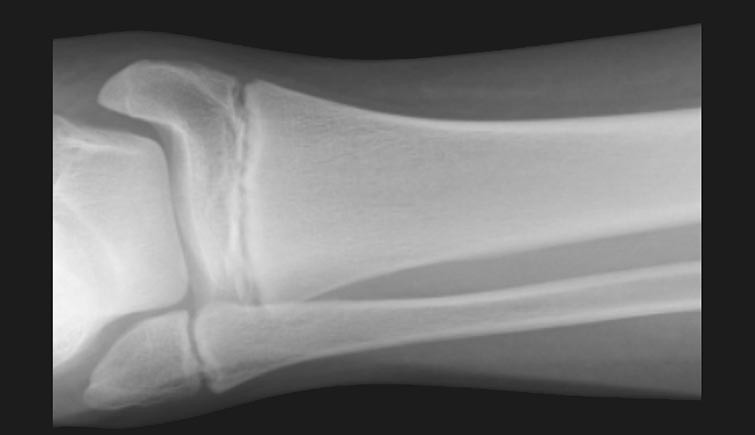
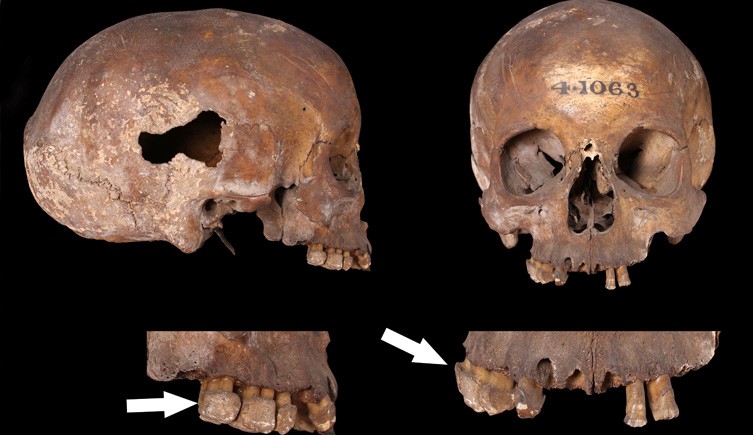
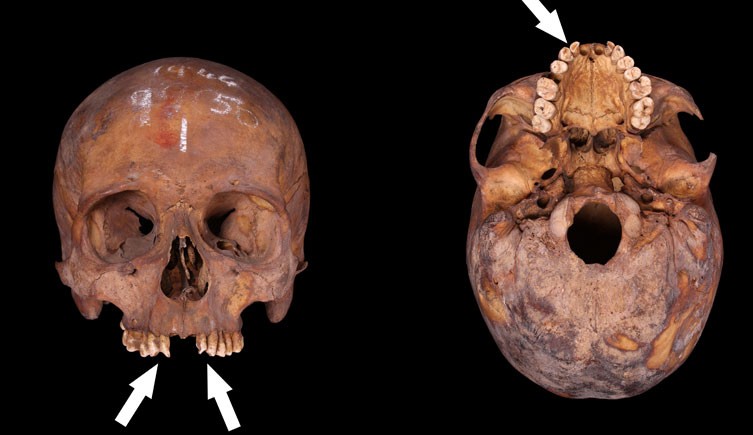
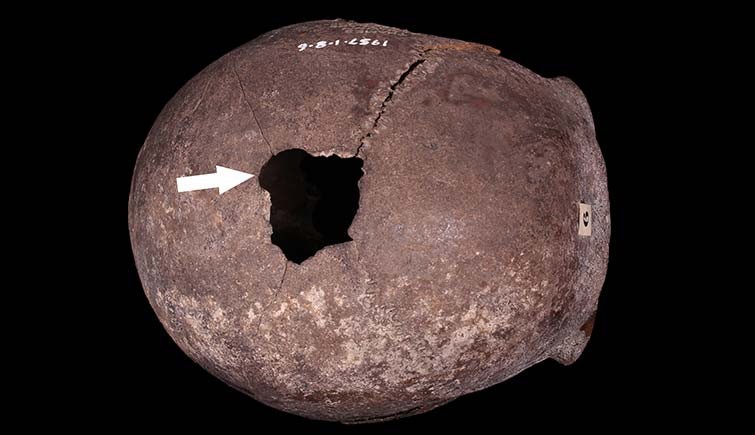
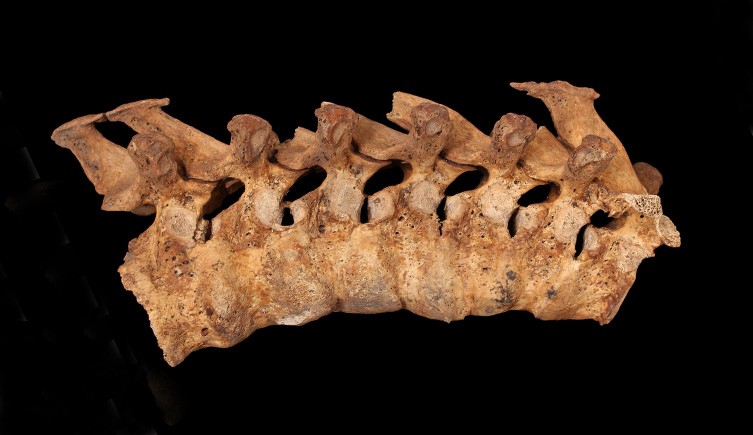
Female and male skulls, highlighting the differences in brow ridges and mastoid process
2.2 Age Estimation
Estimating age at death is more challenging than determining sex, particularly in adults. In juveniles (individuals under the age of 18), age can be estimated based on the stages of tooth development and the fusion of epiphyses (the ends of long bones). The American Academy of Forensic Sciences offers resources on age estimation techniques.
In adults, age estimation relies on degenerative changes in the skeleton, such as:
- Tooth Wear: The degree of tooth wear can provide a rough estimate of age, although this can be affected by diet and other factors.
- Pubic Symphysis: The pubic symphysis, the joint where the two pubic bones meet, undergoes age-related changes in its surface texture.
- Auricular Surface: The auricular surface, located on the ilium (the largest bone in the pelvis), also exhibits age-related changes.
- Rib Ends: The sternal ends of the ribs change in shape and texture with age.
These methods provide a range of possible ages rather than a precise age at death.
The following table summarizes the methods used for age estimation:
| Age Group | Method | Indicators |
|---|---|---|
| Juvenile | Tooth Development | Eruption and development stages |
| Juvenile | Epiphyseal Fusion | Fusion of bone ends to shafts |
| Adult | Tooth Wear | Degree of wear on teeth |
| Adult | Pubic Symphysis | Changes in surface texture and morphology |
| Adult | Auricular Surface | Changes in texture and bone formation |
| Adult | Rib Ends | Changes in shape and texture |
3. Deciphering Health and Disease in Ancient Populations
Skeletal remains can provide direct evidence of diseases and health conditions that affected past populations. Paleopathology, the study of ancient diseases, plays a crucial role in understanding the health challenges faced by our ancestors.
3.1 Common Diseases Evidenced in Skeletons
- Infectious Diseases: Some infectious diseases, such as tuberculosis and syphilis, can leave characteristic lesions on the bones. The Centers for Disease Control and Prevention (CDC) provides information on these diseases.
- Nutritional Deficiencies: Deficiencies in essential nutrients, such as iron, vitamin D, and calcium, can cause skeletal changes like porotic hyperostosis (porous lesions on the skull) and rickets (bowing of the legs).
- Arthritis: Osteoarthritis, a degenerative joint disease, is commonly found in skeletal remains, particularly in older individuals. Rheumatoid arthritis, an autoimmune disease, can also leave distinctive marks on the joints.
- Trauma: Fractures, dislocations, and other injuries can be identified on bones, providing insights into accidents, violence, and warfare.
3.2 Dental Health
Teeth are particularly useful for studying health and diet in ancient populations. Dental caries (cavities), abscesses, and tooth loss can indicate poor oral hygiene and a diet high in sugars and carbohydrates. Dental calculus (tartar) can also be analyzed to identify the types of bacteria present in the mouth and the foods consumed. The World Health Organization (WHO) offers data on the global prevalence of dental diseases.
Here’s a table of common diseases and their skeletal indicators:
| Disease | Skeletal Indicators |
|---|---|
| Tuberculosis | Lesions on vertebrae, ribs, and long bones |
| Syphilis | Lesions on skull and long bones |
| Iron Deficiency Anemia | Porotic hyperostosis (porous lesions on skull), cribra orbitalia (lesions in eye sockets) |
| Rickets | Bowing of legs, thickening of long bones |
| Osteoarthritis | Erosion and polishing of joint surfaces, bone spurs |
| Dental Caries | Cavities in teeth |
| Dental Abscesses | Lesions around tooth roots |
4. Lifestyle and Occupation: Clues from the Skeleton
Skeletal analysis can provide insights into the lifestyles and occupations of individuals in the past. By examining the patterns of bone growth and muscle attachments, researchers can infer the types of activities people engaged in.
4.1 Activity-Related Changes
Repetitive activities and heavy labor can leave characteristic marks on the skeleton. For example:
- Enlarged Muscle Attachments: Individuals who engaged in heavy lifting or manual labor may have enlarged muscle attachments on their bones, particularly in the arms, legs, and back.
- Osteoarthritis: Certain activities, such as squatting or kneeling, can increase the risk of osteoarthritis in the knees and hips.
- Vertebral Compression Fractures: Carrying heavy loads can lead to vertebral compression fractures in the spine.
4.2 Occupational Markers
Specific occupations can leave unique markers on the skeleton. For example:
- Archers: Archers may develop enlarged muscle attachments on their arms and shoulders due to the repetitive motion of drawing a bow.
- Weavers: Weavers may exhibit skeletal changes in their hands and wrists due to the repetitive movements involved in weaving.
- Laborers: Laborers may show more robust bones in general, especially in the arms and legs.
The British Museum provides excellent examples of how skeletal analysis can reveal information about past lifestyles and occupations.
Here is a table summarizing activity-related changes and occupational markers:
| Activity/Occupation | Skeletal Changes |
|---|---|
| Heavy Lifting | Enlarged muscle attachments in arms, legs, and back |
| Squatting/Kneeling | Increased risk of osteoarthritis in knees and hips |
| Carrying Heavy Loads | Vertebral compression fractures |
| Archery | Enlarged muscle attachments in arms and shoulders |
| Weaving | Skeletal changes in hands and wrists |
| Labor | More robust bones, especially in arms and legs |
5. Trauma and Violence: Unveiling the Causes of Death
Skeletal remains can provide direct evidence of trauma, including fractures, dislocations, and sharp force injuries. By analyzing the patterns of trauma, researchers can reconstruct the events leading up to death and gain insights into the prevalence of violence and warfare in past societies.
5.1 Types of Trauma
- Blunt Force Trauma: Blunt force trauma is caused by impact with a blunt object, such as a club or a rock. It can result in fractures, dislocations, and other injuries.
- Sharp Force Trauma: Sharp force trauma is caused by impact with a sharp object, such as a sword or a knife. It can result in cuts, punctures, and other injuries.
- Projectile Trauma: Projectile trauma is caused by impact with a projectile, such as an arrow or a bullet. It can result in penetrating wounds and fractures.
5.2 Interpreting Trauma
Distinguishing between accidental injuries, interpersonal violence, and warfare can be challenging. However, certain patterns of trauma can provide clues:
- Defensive Wounds: Defensive wounds, such as fractures on the forearms and hands, can indicate that the individual was trying to protect themselves from an attacker.
- Perimortem Trauma: Perimortem trauma, which occurs around the time of death, shows no signs of healing. This can indicate that the trauma was the cause of death.
- Multiple Injuries: Multiple injuries, particularly those involving the head and neck, can suggest intentional violence.
The Smithsonian National Museum of Natural History has a collection of skeletal remains with evidence of trauma, offering valuable insights into past violence.
Here is a table summarizing the types of trauma and their possible causes:
| Type of Trauma | Cause |
|---|---|
| Blunt Force | Impact with a blunt object (e.g., club, rock) |
| Sharp Force | Impact with a sharp object (e.g., sword, knife) |
| Projectile | Impact with a projectile (e.g., arrow, bullet) |
| Defensive Wounds | Attempt to protect oneself from an attacker |
| Perimortem Trauma | Trauma around the time of death (no healing) |
| Multiple Injuries | Intentional violence |
6. The Power of Isotopes: Reconstructing Diet and Migration
Isotope analysis is a powerful tool for reconstructing diet and migration patterns in past populations. Isotopes are different forms of the same element, with varying numbers of neutrons. The ratios of certain isotopes in bone and teeth can reflect the foods and water consumed during life.
6.1 Diet Reconstruction
Carbon and nitrogen isotopes are commonly used to reconstruct diet. For example:
- Carbon-13: The ratio of carbon-13 to carbon-12 can indicate the proportion of C3 versus C4 plants in the diet. C4 plants, such as maize (corn), have a higher carbon-13 ratio than C3 plants, such as wheat and rice.
- Nitrogen-15: The ratio of nitrogen-15 to nitrogen-14 can indicate the trophic level of the individual. Individuals who consume more animal protein have higher nitrogen-15 ratios than those who consume primarily plants.
6.2 Migration Patterns
Strontium isotopes can be used to track migration patterns. The ratio of strontium-87 to strontium-86 varies depending on the local geology. By comparing the strontium isotope ratios in bone and teeth to those in local water sources, researchers can determine whether an individual grew up in the area where they were buried.
The University of Oxford’s Research Laboratory for Archaeology and the History of Art provides detailed information on isotope analysis techniques.
Here is a table summarizing isotopes used in diet and migration reconstruction:
| Isotope | Application |
|---|---|
| Carbon-13 (¹³C) | Proportion of C3 vs. C4 plants in diet |
| Nitrogen-15 (¹⁵N) | Trophic level (amount of animal protein in diet) |
| Strontium-87 (⁸⁷Sr) | Geographic origin and migration patterns |
7. Skeletal Collections: Ethical Considerations and Preservation
Skeletal collections are invaluable resources for research and education. However, it is essential to handle and study these remains with respect and sensitivity.
7.1 Ethical Considerations
- Informed Consent: Whenever possible, researchers should obtain informed consent from the descendants or communities associated with the skeletal remains.
- Cultural Sensitivity: Researchers should be aware of and respect the cultural beliefs and practices of the communities associated with the skeletal remains.
- Repatriation: In some cases, skeletal remains may be subject to repatriation, the return of the remains to their country or community of origin.
7.2 Preservation
Proper preservation of skeletal remains is crucial for ensuring their long-term availability for research. This includes:
- Environmental Control: Maintaining a stable temperature and humidity to prevent damage from moisture and pests.
- Proper Storage: Storing the remains in acid-free containers and avoiding exposure to direct sunlight.
- Documentation: Maintaining detailed records of the provenance, context, and analysis of the skeletal remains.
The National Park Service offers guidelines on the proper care and management of archaeological collections, including skeletal remains.
Here is a table summarizing ethical considerations and preservation techniques:
| Aspect | Considerations |
|---|---|
| Ethical Considerations | Informed consent, cultural sensitivity, repatriation |
| Preservation | Environmental control (stable temperature and humidity), proper storage (acid-free containers, no direct sunlight), detailed documentation |
8. Advancements in Technology: Modern Techniques in Skeletal Analysis
Modern technology has revolutionized the field of skeletal analysis, allowing researchers to extract more information from human remains than ever before.
8.1 Imaging Techniques
- Radiography (X-rays): X-rays can be used to identify fractures, dislocations, and other skeletal abnormalities.
- Computed Tomography (CT Scans): CT scans provide detailed three-dimensional images of the skeleton, allowing for the identification of subtle lesions and internal structures.
- Magnetic Resonance Imaging (MRI): MRI can be used to visualize soft tissues, such as cartilage and ligaments, which can provide insights into joint diseases.
8.2 Molecular Analysis
- DNA Analysis: DNA analysis can be used to determine the genetic sex of an individual, identify genetic diseases, and trace ancestry.
- Proteomics: Proteomics, the study of proteins, can be used to identify proteins associated with specific diseases and conditions.
- Ancient DNA (aDNA): Analysis of ancient DNA can provide insights into the genetic makeup of past populations and their relationships to modern populations.
8.3 3D Modeling and Virtual Reconstruction
- 3D Scanning: 3D scanning can be used to create digital models of skeletal remains, allowing researchers to study them in detail without physically handling the bones.
- Virtual Reconstruction: Virtual reconstruction techniques can be used to reconstruct the appearance of an individual based on their skeletal remains.
The Max Planck Institute for Evolutionary Anthropology is at the forefront of developing and applying these advanced techniques.
Here is a table summarizing modern techniques in skeletal analysis:
| Technique | Application |
|---|---|
| Radiography (X-rays) | Identify fractures and skeletal abnormalities |
| CT Scans | Detailed 3D images of the skeleton |
| MRI | Visualize soft tissues (cartilage, ligaments) |
| DNA Analysis | Determine genetic sex, identify genetic diseases, trace ancestry |
| Proteomics | Identify proteins associated with specific diseases and conditions |
| Ancient DNA (aDNA) | Study the genetic makeup of past populations |
| 3D Scanning | Create digital models of skeletal remains |
| Virtual Reconstruction | Reconstruct the appearance of an individual based on skeletal remains |
9. Case Studies: Remarkable Discoveries from Skeletal Remains
Numerous case studies demonstrate the power of skeletal analysis in uncovering fascinating details about the past.
9.1 King Richard III
The discovery and analysis of King Richard III’s skeleton in 2012 is one of the most famous examples of skeletal analysis. The skeleton showed evidence of scoliosis (curvature of the spine) and multiple injuries, confirming historical accounts of his appearance and death. The University of Leicester led this groundbreaking research.
9.2 Ötzi the Iceman
Ötzi the Iceman, a well-preserved mummy found in the Alps, has provided a wealth of information about life in the Copper Age. Skeletal analysis revealed that he was approximately 45 years old, had osteoarthritis, and suffered from several injuries, including an arrowhead lodged in his shoulder.
9.3 The Mary Rose
The Mary Rose, a Tudor warship that sank in 1545, has yielded a treasure trove of skeletal remains. Analysis of these skeletons has provided insights into the health, diet, and lifestyles of Tudor sailors. The Mary Rose Trust is responsible for the excavation and study of the ship and its contents.
Here is a table summarizing the case studies:
| Case Study | Significance |
|---|---|
| King Richard III | Confirmed historical accounts of appearance and death through skeletal analysis |
| Ötzi the Iceman | Provided insights into life in the Copper Age, including health, diet, and injuries |
| The Mary Rose | Revealed details about the health, diet, and lifestyles of Tudor sailors |
10. Future Directions: The Evolving Field of Bioarchaeology
The field of bioarchaeology is constantly evolving, with new techniques and discoveries emerging all the time. Some of the key areas of future research include:
- Integrating Genomics and Skeletal Analysis: Combining genomic data with skeletal analysis to gain a more comprehensive understanding of human evolution, migration, and disease.
- Developing New Methods for Age Estimation: Improving the accuracy of age estimation techniques, particularly in adults.
- Studying the Effects of Environmental Change on Human Health: Investigating how environmental factors, such as climate change and pollution, have affected human health in the past and continue to do so today.
The Bioarchaeology and Stable Isotope Facility at the University of California, Los Angeles (UCLA) is dedicated to pushing the boundaries of research in this field.
11. LEARNS.EDU.VN: Your Gateway to Deeper Understanding
Do you want to learn more about the fascinating world of skeletal analysis? LEARNS.EDU.VN offers a wide range of resources to help you deepen your understanding of this field. Whether you’re a student, a researcher, or simply curious about the past, you’ll find valuable information and expert insights on our website.
Here’s what you can find at LEARNS.EDU.VN:
- Detailed Articles: Explore in-depth articles on various aspects of skeletal analysis, from sex and age estimation to disease and trauma.
- Expert Interviews: Learn from leading bioarchaeologists and forensic anthropologists about their research and discoveries.
- Educational Courses: Enroll in online courses that cover the fundamentals of skeletal analysis and provide hands-on training in data collection and analysis.
- Resource Library: Access a wealth of resources, including academic papers, books, and websites, to further your research.
- Community Forum: Connect with other enthusiasts and professionals in the field to share ideas and ask questions.
At LEARNS.EDU.VN, we are committed to providing high-quality, accessible education for everyone. Our resources are designed to be engaging, informative, and relevant to your interests. Whether you’re looking to start a career in bioarchaeology or simply want to learn more about the past, LEARNS.EDU.VN is your gateway to deeper understanding.
Ready to explore the skeletal archives of the past? Visit LEARNS.EDU.VN today to discover a world of knowledge and unlock the secrets of our ancestors!
Our team of experts is here to support your learning journey. Contact us at 123 Education Way, Learnville, CA 90210, United States, or reach out via Whatsapp at +1 555-555-1212. We look forward to helping you discover the fascinating world of skeletal analysis.
12. Frequently Asked Questions (FAQs)
Q1: What is skeletal analysis?
Skeletal analysis, also known as bioarchaeology, is the study of human remains from archaeological sites to learn about past populations.
Q2: What can we learn from skeletons?
Skeletons can provide information about age, sex, health, lifestyle, diet, and migration patterns.
Q3: How do you determine the sex of a skeleton?
Sex is primarily determined by examining the pelvis and skull. The female pelvis is wider, while the male skull is more robust.
Q4: How do you estimate the age of a skeleton?
Age is estimated based on tooth development (in juveniles) and degenerative changes in the skeleton (in adults).
Q5: What diseases can be identified from skeletal remains?
Many diseases can be identified, including tuberculosis, syphilis, arthritis, and nutritional deficiencies.
Q6: How can skeletons reveal information about lifestyle?
Skeletal remains can show evidence of activity-related changes, such as enlarged muscle attachments and osteoarthritis.
Q7: What is isotope analysis?
Isotope analysis is a technique used to reconstruct diet and migration patterns by examining the ratios of certain isotopes in bone and teeth.
Q8: What are the ethical considerations in studying skeletal remains?
Ethical considerations include obtaining informed consent, respecting cultural sensitivity, and considering repatriation.
Q9: What are some modern techniques used in skeletal analysis?
Modern techniques include imaging techniques (X-rays, CT scans, MRI), molecular analysis (DNA, proteomics), and 3D modeling.
Q10: Where can I learn more about skeletal analysis?
Visit LEARNS.EDU.VN for detailed articles, expert interviews, educational courses, and a wealth of resources.
By offering comprehensive resources and expert insights, learns.edu.vn empowers individuals to explore the fascinating field of bioarchaeology and unlock the secrets of our ancestors.